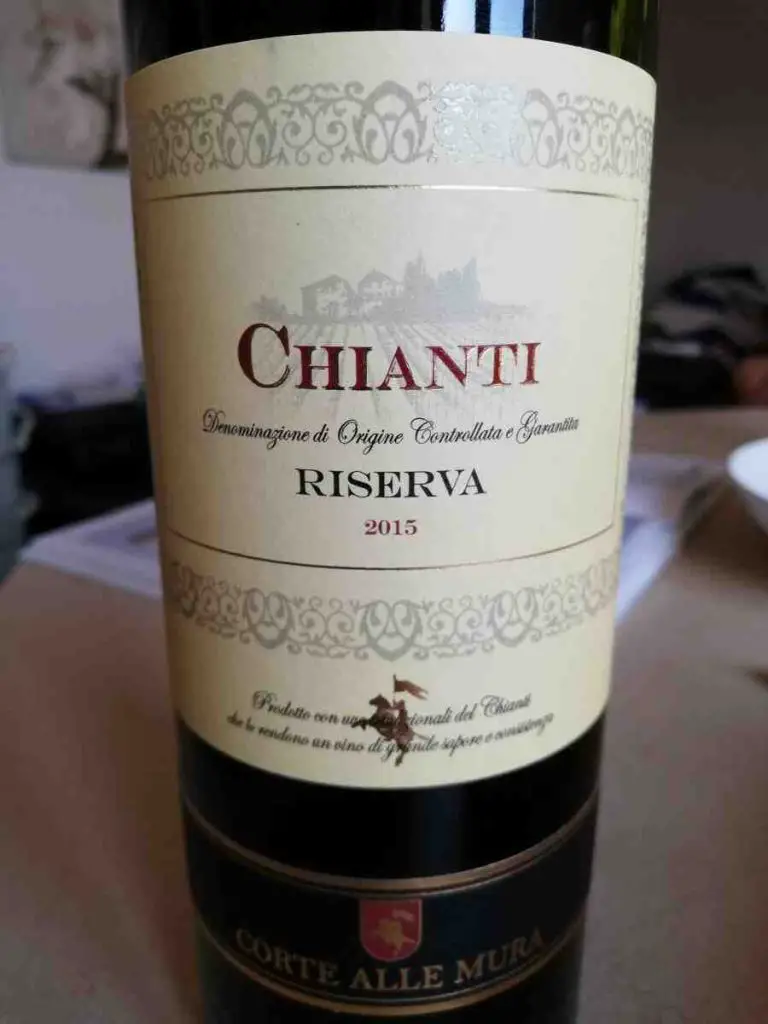
Chianti wine, a timeless emblem of Italian viticulture, holds a storied legacy that has traversed centuries and captured the hearts of wine enthusiasts worldwide. Nestled within the picturesque hills of Tuscany, this iconic red wine varietal, renowned for its vibrant character and rustic charm, encapsulates the essence of Italy’s rich winemaking heritage. With its distinct flavors, evocative aromas, and versatility in both culinary pairings and social celebrations, Chianti stands as a testament to the artistry and craftsmanship that define Italy’s enological traditions.
What is chianti used for
Do you want to replace Chianti with a specific recipe or for pairing it with your favorite dish? Then continue to read here or jump to our quick top 5 substitutes for Chianti section.
Chianti, a classic Italian red wine, is often used in a variety of recipes to enhance flavors and add depth to dishes. Here are some popular recipes that use Chianti as an ingredient:
- Bolognese Sauce: Chianti can be added to the rich and hearty Bolognese sauce, a meat-based pasta sauce. The wine’s acidity and flavors complement the meat and tomatoes, contributing to the complexity of the sauce.
- Osso Buco: This traditional Italian dish features braised veal shanks cooked with vegetables and aromatics. Chianti can be used as part of the braising liquid, infusing the dish with its robust flavors.
- Red Wine Risotto: Chianti can be incorporated into a creamy risotto, adding color and a hint of its distinctive taste to the dish. The wine complements the creamy rice and can be paired with ingredients like mushrooms or Parmesan cheese.
- Tuscan Beef Stew: Chianti is a natural choice for a Tuscan-style beef stew. Its flavors meld well with the beef, vegetables, and herbs, resulting in a comforting and flavorful dish.
- Chicken Cacciatore: Chianti can be used as a base for the tomato sauce in chicken cacciatore, a rustic Italian dish. The wine adds depth to the sauce and works harmoniously with the chicken and vegetables.
- Red Wine Reduction Sauce: Chianti can be reduced to create a flavorful sauce to accompany grilled or roasted meats. The reduction concentrates the wine’s flavors, resulting in a rich and savory sauce.
- Beef or Lamb Marinade: Chianti can be used as a marinade for beef or lamb, infusing the meat with its robust characteristics before grilling or roasting.
- Pappardelle with Wild Boar Ragu: Chianti pairs beautifully with a rich wild boar ragu, adding complexity and enhancing the gamey flavors of the meat.
- Vegetarian Bean Stew: Chianti can be used in a vegetarian stew with beans, vegetables, and herbs, creating a deep and flavorful broth.
- Chianti-Braised Short Ribs: Chianti is an excellent choice for braising short ribs. The wine contributes to the braising liquid, resulting in tender and flavorful meat.
Remember that when using Chianti or any other wine in recipes, it’s important to choose a wine that you would enjoy drinking, as its flavors will contribute to the final dish. Additionally, the alcohol content of the wine will largely evaporate during cooking, leaving behind the nuanced flavors that can enhance your culinary creations.
Top 5 Chianti Substitutes Quick Summary
| ✓ | The primary grape variety used in Chianti production and can provide a similar flavor profile. Pairing: Best for classic Italian dishes, pasta with tomato-based sauces, and roasted meats. |
| ✗ | Quality and style can vary significantly depending on the winemaker and region. |
| ✓ | Feature Sangiovese as the primary grape. They offer complex flavors, balanced acidity, and suitability for Italian cuisine. Pairing: Best for classic Italian dishes, pasta with tomato-based sauces, and roasted meats. |
| ✗ | Tend to be more premium and may have a different flavor profile compared to Chianti. Not widely available. |
| ✓ | Have good acidity and a mix of red and black fruit flavors. Pairing: Suitable for pizza, pasta, and grilled meats with simple herb-based preparations. |
| ✗ | They can be fruitier and less tannic than Chianti, which may affect the balance of certain dishes. They may not have the same herbal and earthy notes. |
| ✓ | Offer a comparable red fruit profile and acidity. Primitivo wines often exhibit ripe and jammy fruit flavors, including dark cherries, blackberries, and plums. Pairing: Italian pasta dishes, grilled meats, pizza, hearty stews, and braises and cheese pairings. |
| ✗ | May lack Chianti’s specific herbal and earthy notes and impact the overall flavor profile. |
| ✓ | Zinfandel wines offer ripe fruit flavors and moderate acidity. Pairings: Works well with barbecue dishes, spicy foods, and strongly flavored cheeses. |
| ✗ | Zinfandel may have a higher alcohol content and richer, jammy flavors compared to Chianti, which could impact the pairing with certain Italian recipes. |
You might like more…
MORE DRINK SUBSTITUTES:
MORE RECIPES THAT CAN BE PAIRED WITH CHIANTI:
